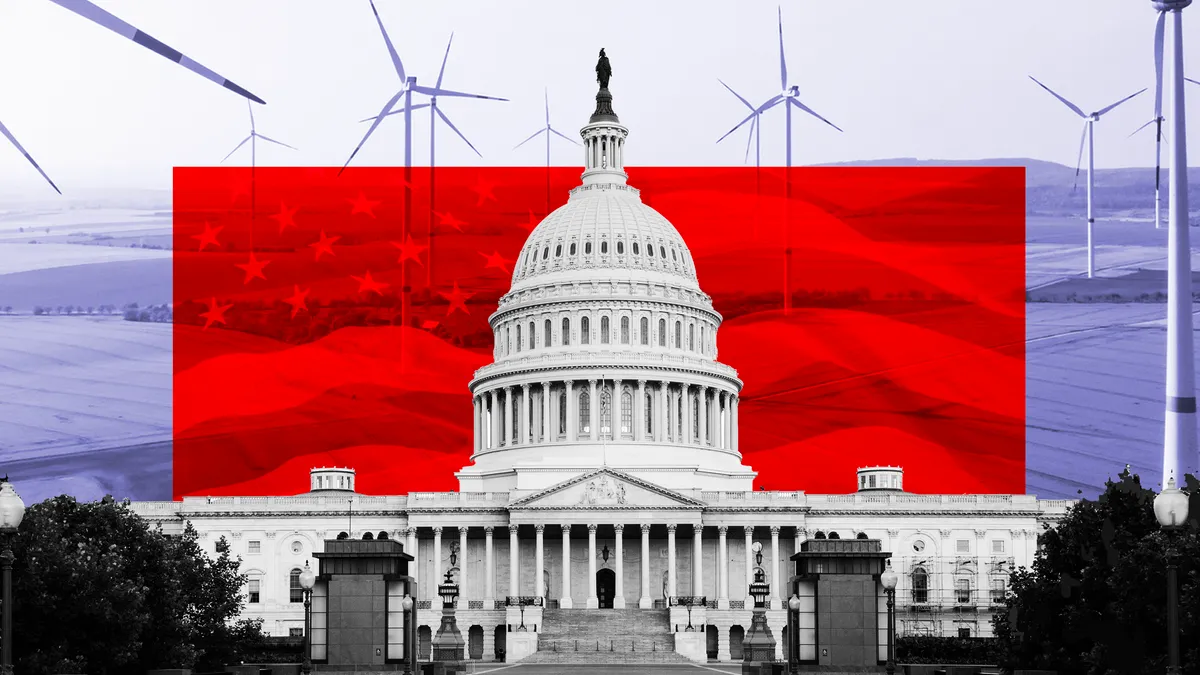Dive Brief:
- 2021 was a landmark year for renewable energy in the U.S., with a record-breaking $105 billion private investment in clean energy technologies and electric vehicles, according to a report released Thursday by BloombergNEF (BNEF) and the Business Council for Sustainable Energy (BCSE).
- Total U.S. investments last year included over 8 GW of announced hydrogen-compatible power turbines, positioning the U.S. to be a hydrogen industry leader in the next decade. In 2021, developers also built 37 GW of wind and solar capacity, while year-to-year sales for electric vehicles doubled from 2020.
- However, some reports show the pace of renewable energy growth in the U.S. is not enough to surpass natural gas anytime soon. "Though renewable sources grow faster, there is still a large established base of fossil fuel use that we simply do not see losing their predominance through 2050, at least not absent some form of policy action," Stephen Nalley, acting administrator of the Energy Information Administration (EIA), said during a briefing on the release of the Annual Energy Outlook on Thursday.
Dive Insight:
The EIA annual report and the 2022 Sustainable Energy in America Factbook, from BNEF and BCSE, were published on Thursday, both highlighting a fast pace of growth for clean energy in the U.S.
The EIA outlook shows renewable energy is the fastest-growing source of energy in the country, but petroleum and natural gas are projected to remain the most consumed through 2050.
The Annual Energy Outlook accounts for all policy action through November 2021. More recent changes, such as a global rise in oil prices or Biden administration efforts to streamline clean energy development, would be reflected in EIA's monthly short-term energy outlooks, analysts said.
The EIA expects renewable generation to increase more rapidly than the overall U.S. demand for electricity through 2050. Wind and solar power additions are expected to largely replace the retiring coal and nuclear generating capacity in the U.S., the EIA Annual Energy Outlook said.
Despite it being a banner year, the U.S. renewable capacity additions will need to double from recent levels to achieve the Biden administration's decarbonization goals, according to BNEF. Both reports notes the need for policy to modernize transmission and incentivize accelerated deployment of renewables.
Private investment was at an all-time high in the U.S. in 2021, from wind, solar and energy storage to more nascent technologies like hydrogen and carbon capture, per BNEF.
The clean energy technology that is in earlier stages of development will also be receiving federal support. The Biden administration announced in 2021 three separate goals, or "Energy Earthshots," to advance hydrogen production, direct air carbon capture, and long-duration energy storage.
The hydrogen Earthshot is aimed at reducing the cost of the technology. BNEF also expects a sharp decline in the cost of operating hydrogen electrolyzer systems, predicting that western electrolyzer system prices will converge with Chinese-made systems by 2030.
According to BNEF, half of the planned hydrogen-natural gas blend projects announced in the U.S. are expected to run on 100% H2 by 2045. The "vast majority" of the hydrogen that the U.S. produced in 2021 came from unabated natural gas, the report said. But the U.S. is also seeing efforts to develop cleaner sources for hydrogen.















